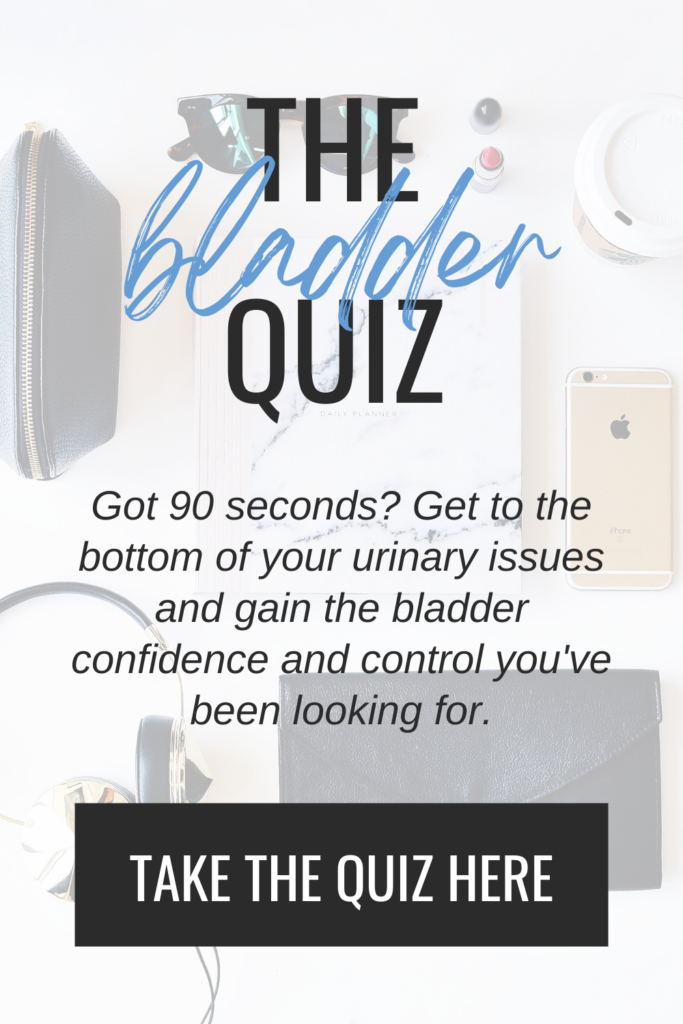I’ve taken plenty of personality tests, learned enough about my astrology signs, and done sufficient journaling to know ya girl’s love for goal setting runs deep. Give me a cute notebook, the ~perfect~ smooth, inky pen, a few highlighters, and a quiet morning with a cup of coffee, and I’ll treat any day of the week like it’s December 31st with dreaming, goal setting, planning, and resolutions.
Financial goals are fun, relationship goals are lovely, and career goals, environmental impact goals, and adventure goals all have their rightful place. But health goals? Mmmmmmmm…now you’re speakin’ my language. Women’s health is multi-faceted, including physical, mental, emotional, and spiritual wellbeing, and IMO, nothing sounds quite as rewarding as setting health goals and seeing growth around them.
Health is everything! And if you can’t get out of bed in the morning, are sluggish or sick, or simply aren’t feeling like your amazing, BA self, those other goals are less likely to happen, ya know?
Maybe you’ve heard of SMART goals before – this acronym stands for Specific, Measurable, Attainable, Relevant, and Timely, and is an effective approach to making goals you can actually check off as completed. While the SMART principle can be applied to any and every type of pursuit, as a pelvic rehab therapist, I specialize in helping women create and achieve pelvic health goals around bowel, bladder, and sexual pain and dysfunction.
PS- It’s ok to have more than one pelvic health goal! Believe it or not, most issues “down there” related to and affect each other because the urinary, reproductive, and gastrointestinal systems all travel through the pelvis. If the pelvic floor muscles are too tight, too weak, or just aren’t workin’ right, it can affect any and all of the above.
As we anticipate a New Year right around the corner, the excitement of a fresh start and big possibilities is in the air. In other words, this is the perfect time to set a pelvic health goal or two. And whether you’re reading this in December or the middle of March…there’s no time like the *present* to evaluate your current pelvic health situation, focus your energy, and work towards the results you’ve been wanting.
RELATED POST: 5 [Unexpected] Benefits of Making My Pelvic Health a Priority
RELATED POST: An Open Letter to My Patients – Past, Present + Future
If less leakage, no pain, easier bowel movements, or better periods (to name a few) are on the list of things you hope to accomplish this year, then applying the SMART goal-setting strategy to your pelvic health efforts will be your best chance for success. There’s no reason to go through another year managing, dealing, or suffering when you could be confident, thriving, and living your best life with peak (pelvic) health.
S – Specific
I keep bringing up this idea of “pelvic health goals”, but it’s important to be more specific when setting your own healing objectives. Saying you want “improved pelvic health” or “fewer pelvic floor issues” is general and vague, and while the intention is 100000000% in the right place (and I love ya for it!), this simple sentiment isn’t enough to drive action…nor will you know where to start.
You can’t ask your hairdresser for “shorter” or “darker” and expect amazing results (unless your hair gal is a magical as mine); similarly, the goal of “a better bladder” just won’t suffice. Instead, identify your issues to determine your desires, and more precise goals like “less leakage” or “able to hold it longer” will come to light. “Decreased pain” can become “sex is more comfortable” or even more specific – “less severe pain with initial vaginal penetration”.
SAMPLE: I will have less bladder leakage when I sneeze.
RELATED POST: 4 Key Signs You’re Ready to Fix Your Bladder Issues
Stating an exact goal with details and direction is the best first step aaaaaaand is far more likely to those not-so-humble, brag-worthy results. Not only will you be crystal clear on what you’re working towards and where to put your time and effort, but you’ll also be more aware of when you reach that goal and able to confidently celebrate that win (by far the best part of goal setting, dontcha think?!).
M – Measurable
Once you have a specific goal in mind, it’s essential to throw a few numbers or other measureable factors into the mix. While “less”, “more”, “better” or “fewer” is a step in the right direction, it’s important to be detailed in what you’re trying to achieve. Working towards a number creates a definitive stopping point, helps you see change over time, and makes it clear if your efforts are taking you in the right direction.
Adding values of time, frequency, or severity will give you far more clarity and results in your goal setting practice. Rate the pain number you want to hit, set how long you’d like to hold it before going to the bathroom, or state the frequency you prefer to poop in a week. And because pain-free sex, zero bladder leakage, and ~totally~ comfortable periods are achievable, 100% healing can be something you strive for.
SAMPLE: Sex will be more comfortable with pain reaching less than a 2/10.
RELATED POST: [Everything] You Need to Know About Vaginal Dilators
Creating a measurable pelvic health goal is a ~must~ if you truly want to know you’ve “made it”. It also allows you to set smaller goals along the way (a research-proven beneficial strategy), provides a means to adapt your goals as time goes on, and keeps you in control of your accomplishments. The number you set is your finish line, and I think it’s so much sweeter to end a race when there’s actually a red tape to run through.
A – Attainable
Ok…this one can be hard (especially in the world of pelvic health), because women have been told less leakage, no pain with sex, and easy periods just aren’t possible. So when I pop in here and tell you to set a goal that’s “attainable”, you miiiiiight feel a bit confused.
There are circumstances and situations where a 0/10 pain level or 100% resolution pelvic health goal may not be completely realistic. An underlying disease or disorder, extensive surgical history, or traumatic event ~can~ make some goals harder to reach. But otherwise…I say you can and should work towards as close to perfection as possible.
SAMPLE: I will have less period pain that will reach up to a 1/10 on two days of my cycle.
RELATED POST: 7 Holistic Menstrual Cycle Hacks to Help You Thrive During Your Period
RELATED POST: You’ve Gotta Read at Least One of [These] 5 Books If You Want a Better Menstrual Cycle
Setting and completing realistic goals gives your brain the dopamine boost it needs to keep you on the trajectory forward. Can I hope for better? Yes! Can I strive for better once that goal is achieved? Also yes! Desiring excellence is amazing and often achievable when it comes to pelvic health, and as long as you have a plan in place, you can expect to succeed.
R – Relevant
Setting health goals that don’t relate to a current issue you’re experiencing is prooooobably the number one way to lose momentum and fail at that resolution. You should only commit time and energy to something you ~actually~ want or need to achieve and would change your life for the better. Creating relevant health goals that truly pertain to you and your circumstances will ensure your efforts are used wisely and you’re working towards something that really matters.
Have a bigger reason for the goals you set. Know your “why” for creating that goal in the first place and let it go deep. “Less leakage” is lovely, but what does that really mean for you? Moving faster and stronger in your workouts? Saying yes to your kids at the trampoline park? Spending less money on pads? Confidence, control, and freedom?
Your pelvic health goals need significance if you’re going to wake up and work towards them every. single. day., and the more weight you can put behind each goal you set, the greater your perseverance will be.
T – Timely
Side note (that has a purpose…I promise): I’m not a huge fan of hiking. I love exercise, and enjoy the outdoors, but walking trudging up a hill just to walk back down again is not my cup of tea. Iffffffffff I do get roped into a hike, I want to know how far it is, how long it’s expected to take, what the weather’s like, and what snack will be waiting for me at the top. I (literally) need to mentally prepare myself so the hike doesn’t end in tears, and I enjoy the excursion significantly more when I know all the details.
Pelvic health goals are the same. Many don’t fully understand what the pelvic floor is let alone how long it will take to fix their issues, and having this information can make setting and keeping pelvic health goals far more successful. While everyone is different, it takes the average person about three months to see the results they’re looking for. Knowing this, you can put a realistic timeline on your pelvic health goals and confidently track your efforts.
EXAMPLE: My pelvic pain from endometriosis will be consistently less than a 2/10 within three months.
RELATED POST: My Favorite Resources for Easy + Actionable Endometriosis Information
Now…if you don’t reach your goal within the set time frame, that doesn’t make you a failure. It simply means you need to change your approach, seek further guidance, or just take more time. The pelvic floor (unfortunately) doesn’t work like Amazon Prime, and even though results aren’t instant or promised in the next day’s delivery, creating a time-bound goal will keep you motivated and excited to take action and stay consistent in reaching it.
There’s something magical about the energy around goal setting, and the potential life changes that come with creating, working towards, and eventually completing pelvic health goals are worth the extra effort to make them SMART. Once your resolution is specific, measureable, attainable, relevant, and timely, you can move forward and start taking action to achieve it.
Not sure what action steps to take? Goal setting with fancy planners and color-coded highlighters is fun, but you’ll still have all the issues at the end of your dreaming sesh if you don’t know what to do next.
Working one on one with a pelvic rehab therapist in your area is ideal (click here to find a pelvic floor PT near you), but if you don’t have the time, energy, or resources to make that happen, I created a few other options I thiiiiiiiink you’ll find helpful –
- 5-Day Pelvic Health Email Challenge: Five days, five emails from yours truly with totally doable action steps to get you closer to your pelvic health goals. Pain, leakage, menstruation, constipation…I discuss it all ~and~ give you my tried and true strategies to help you feel confident and clear in your pelvic healing journey.
- 8-Week Bladder Healing Course: Kiss your bladder problems goodbye with this comprehensive, step-by-step system that brings pelvic rehab out of the clinic and conveniently onto your computer screen. Finally resolve bladder leakage, urgency, and frequency in a matter of weeks with this totally realistic (how I roll) and research-backed roadmap for freedom, confidence, and control in the new year.
- Alllllllll the resources: Click on over to the M+M resources page and find all the free guides you’d ever need to get kick start your pelvic health goals. From relaxing your pelvic floor (a must for pain and postpartum healing) to the ultimate kegel guide (helloooooo strength and control)…and more (!!!), this is the stuff every woman should start with when setting and seeking out her pelvic health goals.
Now I’d looooove to hear from you! Tell me in the comments what goals you’re pursuing in the New Year, and specifically…what pelvic health goals you’re looking to achieve in the next few months (that’s really all it takes when you have the right guidance, friend!). I can’t wait to cheer you on!
I firmly believe no pelvic health goal is too big, and I ~know~ that addressing your bladder, bowel, and sexual pain and dysfunction could be the first step towards the life you know you deserve. Be SMART about your goal setting (haha), put in the work, and watch the magic happen.
– Amanda
Disclaimer: The content provided here does not constitute medical advice, nor is it a substitute for personalized healthcare. I’m a doctor, but I’m not your doctor. If you have concerns about a medical condition, diagnosis, or treatment, you should consult with a licensed healthcare professional.



















